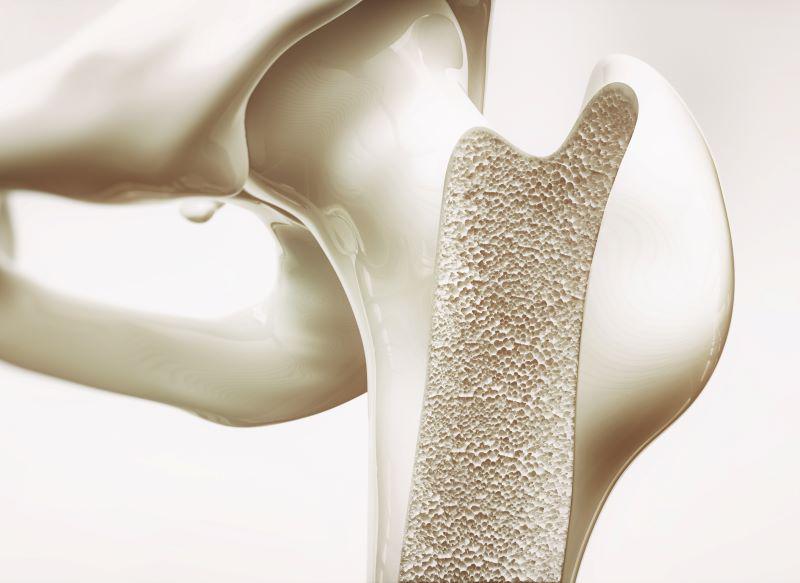Get Healthy!

- Cara Murez
- Posted May 15, 2023
Bone Up on Osteoporosis & Your Bone Health
It's important to understand your bone health to avoid damage as you age.
Losses of bone mineral density and bone mass can cause weakening, potentially leading to a fracture, especially in the hip, spine and wrist.
Osteoporosis is considered a silent disease because it often has no symptoms until someone breaks a bone in an unusual way, according to the Hospital for Special Surgery in New York City.
"Breaking a bone after falling while in a standing position could be a sign of osteoporosis,"endocrinologist Dr. Jessica Starr said in a hospital news release. "Any fracture should prompt a discussion of bone health with one's doctor."
Chances of that happening go up with age. Before osteoporosis comes osteopenia, a less-serious loss of bone density. This affects more than half of adults ages 50 and up in the United States. Women are at greater risk.
Bones are living tissue affected by hormones and whether someone gets enough vitamins and minerals. People have peak bone mass at puberty and it continues into the 20s and the 30s, when the body constantly creates new bone. Menopause often brings on a loss in bone density.
A bone density test can diagnose osteopenia and osteoporosis. It's an X-ray that provides information about bone strength and fracture risk.
Healthy women should have an initial bone density screening at age 65. Men should do so at age 70.
Women with risk factors for bone loss, such as a family history of fractures or the use of certain medications such as steroids, should get screening earlier.
People who ate very little calcium in younger years, had an eating disorder, smoked or consumed excessive amounts of alcohol may also be vulnerable to accelerated bone loss, Starr said.
If you have osteopenia or osteoporosis, talk to your doctor about how to prevent further bone loss. You may need lifestyle changes and medication.
"There's no one-size-fits-all approach to treating osteoporosis,"Starr said. "Different medications are available, and treatment should be tailored to the needs of each individual."
Lifestyle changes that can help include getting adequate calcium and vitamin D. Eating a nutrient-rich diet that includes all the major food groups is also important. Don't smoke. Exercise regularly. Weight-bearing and resistance exercises can help build and preserve bone mass. Walking, dancing and muscle strength training are all great options. Drinking too much alcohol can also lead to decreased bone density.
"It's best to get calcium and vitamin D from our diet," Starr said. "Individuals should try to get at least half of their daily calcium from foods such as dairy products, dark, green leafy vegetables and high-calcium fish like salmon and sardines."
Keep your bones -- and yourself safe -- by taking easy steps to prevent falls.
Start by securing all rugs to the floor. Keep floors clear of objects that could cause a tripping hazard. Make sure there's good lighting in your home.
Your bath or shower should have a non-slip surface. Install a grab bar for extra safety. Adults should also wear supportive shoes with nonslip soles.
More information
The U.S. National Institutes of Health has more on daily calcium intake.
SOURCE: Hospital for Special Surgery, news release, May 10, 2023






